 W
WThe African-American Research Library and Cultural Center is a library located at 2650 Sistrunk Boulevard in Fort Lauderdale, Florida, in the United States. A branch of the Broward County Library, it opened on October 26, 2002.
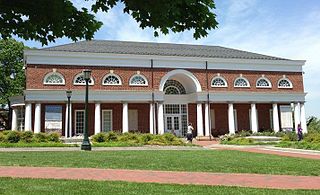 W
WThe Albert and Shirley Small Special Collections Library at the University of Virginia is a research library that specializes in American history and literature, history of Virginia and the southeastern United States, the history of the University of Virginia, Thomas Jefferson, and the history and arts of the book. The library is named after Albert and Shirley Small, who donated substantially to the construction of the library's current building. Albert Small, an alumnus of the University of Virginia, also donated his large personal collection of "autograph documents and rare, early printings of the Declaration of Independence." This collection includes a rare printing of the Dunlap broadside of the Declaration of Independence. Joining the library's existing Dunlap in the Tracy W. McGregor Collection of American History, Small's copy made U.Va. the only American institution with two examples of this, the earliest printing of the nation's founding document. It also includes the only letter written on July 4, 1776, by a signer of the Declaration, Caesar Rodney. The Albert H. Small Declaration of Independence Collection boasts an interactive digital display which allows visitors to view the historical documents electronically, providing access to children and an opportunity for visitors to manipulate the electronic copies without risk of damage to the original work.
 W
WThe American Antiquarian Society (AAS), located in Worcester, Massachusetts, is both a learned society and national research library of pre-twentieth century American history and culture. Founded in 1812, it is the oldest historical society in the United States with a national focus. Its main building, known as Antiquarian Hall, is a U.S. National Historic Landmark in recognition of this legacy. The mission of the AAS is to collect, preserve and make available for study all printed records of what is now known as the United States of America. This includes materials from the first European settlement through the year 1876.
 W
WThe American Newspaper Repository is a charity whose purpose is to collect and preserve original copies of American newspapers. It was founded in 1999 by the author Nicholson Baker when he learnt that the British Library was disposing of its collection of historic American newspapers. He cashed in his retirement fund to successfully bid for the collection at auction. With support from the Knight Foundation and MacArthur Foundation, the repository was established in an old mill building in Rollinsford, New Hampshire. While serving as a director, Baker researched and wrote Double Fold: Libraries and the Assault on Paper about the way in which other library institutions were destroying rather than preserving such originals.
 W
WThe Armstrong Browning Library is located on the campus of Baylor University in Waco, Texas, USA and is the home of the largest collections of English poets Robert Browning and Elizabeth Barrett Browning. Additionally it is thought to house the largest collection of secular stained glass in the world.
 W
WThe Auburn Avenue Research Library on African American Culture and History is a special library within the Atlanta-Fulton Public Library System. It is in Atlanta's Sweet Auburn Historic District. The Auburn Avenue Research Library opened in 1994 as the first library in the Southeast to offer specialized reference and archival collections for the study and research of African American culture and history and of other peoples of African descent. Its collection was housed at other libraries and became knowm as the Samuel W. Williams Collection on Black America.
 W
WAuckland Libraries is the public library system for the Auckland Region of New Zealand. It was created when the seven separate councils in the Auckland region merged in 2010. It is currently the largest public-library network in the Southern Hemisphere with 55 branches from Wellsford to Waiuku. Currently from March 2021, the region has a total of 56 branches.
 W
WThe Bancroft Library in the center of the campus of the University of California, Berkeley, is the university's primary special-collections library. It was acquired from its founder, Hubert Howe Bancroft, in 1905, with the proviso that it retain the name Bancroft Library in perpetuity. The collection at that time consisted of 50,000 volumes of materials on the history of California and the North American West. It is the largest such collection in the world. The building the library is located in, the Doe Annex, was completed in 1950.
 W
WThe Beinecke Rare Book & Manuscript Library is the rare book library and literary archive of the Yale University Library in New Haven, Connecticut. Established by a gift of the Beinecke family and given its own financial endowment, the library is financially independent from the university and is co-governed by the University Library and Yale Corporation.
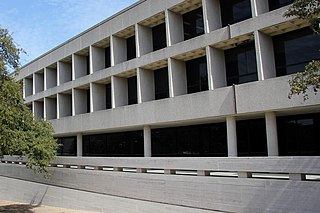 W
WThe Nettie Lee Benson Latin American Collection is part of the University of Texas Library system in partnership with the Teresa Lozano Long Institute for Latin American Studies (LLILAS), located in Austin, Texas, and named for the historian and bibliographer, Nettie Lee Benson (1905-1993). It is one of the world's most comprehensive collections of Latin American materials.
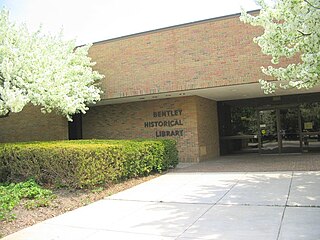 W
WThe Bentley Historical Library is the campus archive for the University of Michigan and is located on the University of Michigan's North Campus in Ann Arbor. It was established in 1935 by the regents of the University of Michigan. Its mission is to serve as the official archives of the university and to document the history of the state of Michigan, as well as the activities of its people, organizations and voluntary associations. The library is named after Alvin M. Bentley, a former regent and U.S. Congressman, whose widow, Arvella D. Bentley, endowed the library.
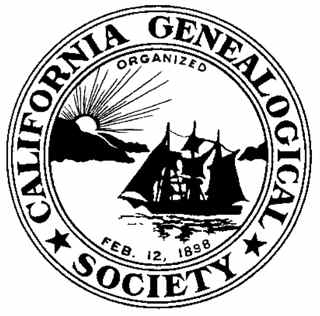 W
WThe California Genealogical Society (CGS) is a genealogical institution, the oldest and largest in California. Founded in 1898, its mission is to aid Californians in tracing family history, through its research services, educational resources, online tools, and genealogical databases.
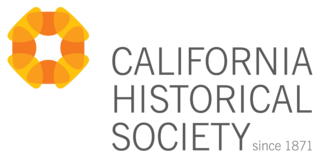 W
WThe California Historical Society (CHS) is the official historical society of California. It was founded in 1871, by a group of prominent Californian intellectuals at Santa Clara University. It was officially designated as the Californian state historical society in 1979. Its headquarters are in San Francisco, though it hosts exhibits and collections across California.
 W
WThe Cheng Yu Tung East Asian Library is a Canadian library and a part of the University of Toronto Libraries system. Located on the 8th floor of the Robarts Library at the University of Toronto's St. George campus, it is a major research collection on East Asian Studies in North America with over 660,000 volumes. The Library is open to the general public.
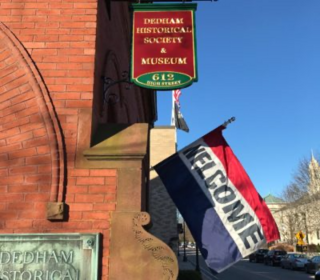 W
WThe Dedham Historical Society and Museum is a historical society dedicated to preserve and establish a greater sense of appreciation for the history of Dedham, Massachusetts. It consists of a museum and an archive. As of 2002, it had nearly 1,000 members.
 W
WConstructed in 1915, Elmer Ellis Library is the main library of the University of Missouri on the campus of the University of Missouri in Columbia, Missouri. It was named in 1972 for former university president Elmer Ellis. With holdings of over three million volumes and six million microforms, The University of Missouri library system has been part of the Federal Depository Library Program since 1862.
 W
WThe Elmer Belt Library of Vinciana is a special collection at the University of California, Los Angeles which focuses on Leonardo da Vinci-- life, art, thought, and enduring cultural influence. It is the most extensive research collection concerning Leonardo in the United States. It was donated to UCLA in several installments between 1961 and 1966 by Dr. Elmer Belt (1893-1980), an internationally recognized urologist; a pioneer in gender affirmation surgery; a strong supporter in the founding of the UCLA School of Medicine; an important public health advocate; and a lifelong bibliophile and book collector.
 W
WThe Getty Research Institute (GRI), located at the Getty Center in Los Angeles, California, is "dedicated to furthering knowledge and advancing understanding of the visual arts".
 W
WThe Hagley Museum and Library is a nonprofit educational institution in unincorporated New Castle County, Delaware, near Wilmington. Covering more than 235 acres (95 ha) along the banks of the Brandywine Creek, the museum and grounds include the first du Pont family home and garden in the United States, the powder yards, and a 19th-century machine shop. On the hillside below the mansion lies a Renaissance-revival garden, with terraces and statuary, created in the 1920s by Louise Evalina du Pont Crowninshield (1877–1958).
 W
WThe Harry Ransom Center is an archive, library and museum at the University of Texas at Austin, specializing in the collection of literary and cultural artifacts from the Americas and Europe for the purpose of advancing the study of the arts and humanities. The Ransom Center houses 36 million literary manuscripts, one million rare books, five million photographs, and more than 100,000 works of art.
 W
WThe Historical Society of Pennsylvania is a long-established research facility, based in Philadelphia. It is a repository for millions of historic items ranging across rare books, scholarly monographs, family chronicles, maps, press reports and varied ephemera, reaching back almost 300 years, and accessible on the society’s website.
 W
WHocken Collections (Māori: Uare Taoka o Hākena, formerly the Hocken Library) is a research library, historical archive, and art gallery based in Dunedin, New Zealand. Its library collection, which is of national significance, is administered by the University of Otago.
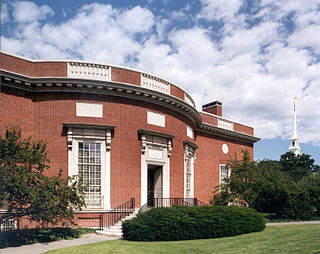 W
WHoughton Library, on the south side of Harvard Yard adjacent to Widener Library, is Harvard University's primary repository for rare books and manuscripts. It is part of the Harvard College Library, the library system of Harvard's Faculty of Arts and Sciences.
 W
WThe James Ford Bell Library is a special collection of the University of Minnesota Libraries located on the University of Minnesota Minneapolis campus. It is named for its first donor and patron James Ford Bell, founder of the General Mills Corporation in Minneapolis, Minnesota. The collection consists of some 40,000 rare books, maps, manuscripts, broadsides, pamphlets and other materials documenting the history and impact of international trade and cultural exchange in the pre-modern era, before ca. 1800. Its materials range in date from 400 CE to 1825 CE, with the bulk of the collection concentrated between the years 1450 and 1790, the early modern period. The library is known for its globe gores copy of the 1507 Waldseemuller world map, and it acquired a copy of the 1602 Impossible Black Tulip Chinese world map in 2009. The scope of the collection is global and more than 15 languages are represented.
 W
WThe John Carter Brown Library is an independently funded research library of history and the humanities on the campus of Brown University in Providence, Rhode Island. The library's rare book, manuscript, and map collections encompass a variety of topics related to the history of European exploration and colonization of the New World until circa 1825. The library was the first independent private library placed within the context of a university campus in the United States.
 W
WThe John Hay Library is the second oldest library on the campus of Brown University in Providence, Rhode Island, United States. It is located on Prospect Street opposite the Van Wickle Gates. After its construction in 1910, the Hay Library became the main library building on campus, replacing the building now known as Robinson Hall. Today, the John Hay Library is one of five individual libraries that make up the University Library. The Hay houses the University Library's rare books and manuscripts, the University Archives, and the Library's special collections.
 W
WThe John Rylands Research Institute and Library is a late-Victorian neo-Gothic building on Deansgate in Manchester, England. The library, which opened to the public in 1900, was founded by Enriqueta Augustina Rylands in memory of her husband, John Rylands. It became part of The University of Manchester in 1972, and now houses the majority of the Special Collections of The University of Manchester Library, the third largest academic library in the United Kingdom.
 W
WThe L. Tom Perry Special Collections Library is the rare book and manuscript library at Brigham Young University (BYU) in Provo, Utah. Founded in 1957 with 1,000 books and 50 manuscript collections, as of 2016 it contained over 300,000 books, 11,000 manuscript collections, and over 2.5 million photographs. Since its inception, the library has been housed in numerous places including the crawl space of a university building and a wholesale grocery warehouse. As of 2016, the special collections library is located on the first floor of the Harold B. Lee Library and is considered to hold "the finest collection of rare books in the Intermountain West and the second finest Mormon collection in existence".
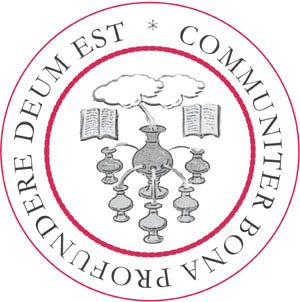 W
WThe Library Company of Philadelphia (LCP) is a non-profit organization based in Philadelphia. Founded in 1731 by Benjamin Franklin as a library, the Library Company of Philadelphia has accumulated one of the most significant collections of historically valuable manuscripts and printed material in the United States.
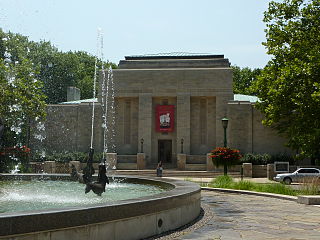 W
WThe Lilly Library, located on the campus of Indiana University in Bloomington, Indiana, is an important rare book and manuscript library in the United States. At its dedication on October 3, 1960, the library contained a collection of 20,000 books, 17,000 manuscripts, more than fifty oil paintings, and 300 prints. Currently, the Lilly Library has 8.5 million manuscripts, 450,000 books, 60,000 comic books, 16,000 mini books, 35,000 puzzles, and 150,000 sheets of music.
 W
WThe Staatsarchiv Ludwigsburg, located in Ludwigsburg, Germany, is a public institutional repository for roughly 680 state authorities within the District of Stuttgart, Germany.
 W
WThe Maastricht University Special Collections is the heritage library of Maastricht University. The collections are part of the closed stacks department of the University Library which is housed in Grote Looiersstraat 17, a historic building dating back to 1757. The collections are of significant value to society, education and research. The diversity of nationalities of the writers and publishers in the collections reflect Maastricht as a thriving cultural and regional hub.
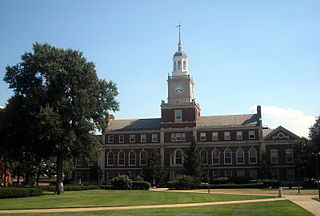 W
WThe Moorland–Spingarn Research Center (MSRC) in Washington, D.C., is located on the campus of Howard University on the first and ground floors of Founders Library. The MSRC is recognized as one of the world's largest and most comprehensive repositories for the documentation of the history and culture of people of African descent in Africa, the Americas, and other parts of the world. As one of Howard University's major research facilities, the MSRC collects, preserves, organizes and makes available for research a wide range of resources chronicling the Black experience. Thus, it maintains a tradition of service which dates to the formative years of Howard University, when materials related to Africa and African Americans were first acquired.
 W
WThe Morgan Library & Museum, formerly the Pierpont Morgan Library, is a museum and research library in the Murray Hill neighborhood of Manhattan in New York City. It is situated at 225 Madison Avenue, between 36th Street to the south and 37th Street to the north.
 W
WThe New York Public Library for the Performing Arts, Dorothy and Lewis B. Cullman Center, at 40 Lincoln Center Plaza, is located in Manhattan, New York City, at the Lincoln Center for the Performing Arts on the Upper West Side, between the Metropolitan Opera House and the Vivian Beaumont Theater. It houses one of the world's largest collections of materials relating to the performing arts. It is one of the four research centers of the New York Public Library's Research library system, and it is also one of the branch libraries.
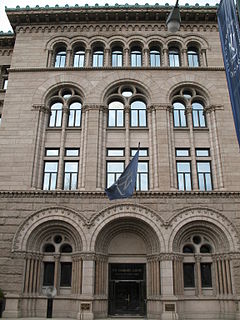 W
WThe Newberry Library is an independent research library, specializing in the humanities and located on Washington Square in Chicago, Illinois. It has been free and open to the public since 1887. Its collections encompass a variety of topics related to the history and cultural production of Western Europe and the Americas over the last six centuries. The Library is named to honor the founding bequest from the estate of philanthropist Walter Loomis Newberry. Core collection strengths support research in several subject areas, including maps, travel, and exploration; music from the Renaissance to the early twentieth century; early contact between Western colonizers and Indigenous peoples in the Western Hemisphere; the personal papers of twentieth-century American journalists; the history of printing; and genealogy and local history.
 W
WThe Phillips Library of the Peabody Essex Museum (PEM) is a rare books and special collections library. It is made up of the collections of the former Peabody Museum of Salem and the Essex Institute. Both had libraries named for members of the Phillips family.
 W
WIn the United States, the presidential library system is a nationwide network of 13 libraries administered by the Office of Presidential Libraries, which is part of the National Archives and Records Administration (NARA). These are repositories for preserving and making available the papers, records, collections and other historical materials of every president of the United States from Herbert Hoover to George W. Bush. In addition to the library services, museum exhibitions concerning the presidency are displayed.
 W
WThe Rare Book & Manuscript Library is principal repository for special collections of Columbia University. Located in New York City on the university's Morningside Heights campus, its collections span more than 4,000 years, from early Mesopotamia to the present day, and span a variety of formats: cuneiform tablets, papyri, and ostraca, medieval and Renaissance manuscripts, early printed books, works of art, posters, photographs, realia, sound and moving image recordings, and born-digital archives. Areas of collecting emphasis include American history, Russian and East European émigré history and culture, Columbia University history, comics and cartoons, philanthropy and social reform, the history of mathematics, human rights advocacy, Hebraica and Judaica, Latino arts and activism, literature and publishing, medieval and Renaissance manuscripts, oral history, performing arts, and printing history and the book arts.
 W
WThe Rare Book & Manuscript Library at the University of Illinois at Urbana–Champaign (RBML) is located on the 3rd floor of the University Library. The library is one of the largest special collections repositories in the United States. Its collections, consisting of over half a million volumes and three kilometers of manuscript material, encompass the broad areas of literature, history, art, theology, philosophy, technology and the natural sciences, and include large collections of emblem books, writings of and works about John Milton, and authors' personal papers.
 W
WThe Rosenbach is a Philadelphia museum and library located within two 19th-century townhouses. The historic houses contain the collections and treasures of Philip Rosenbach and his younger brother Dr. A. S. W. Rosenbach. The brothers owned the Rosenbach Company, which became the preeminent dealer of rare books, manuscripts and decorative arts during the first half of the 20th century. Dr. Rosenbach in particular was seminal in the rare book world, helping to build libraries such as the Widener Library at Harvard, The Huntington Library and the Folger Shakespeare Library. In 2013, the Rosenbach became a subsidiary of the Free Library of Philadelphia Foundation, but maintains its own board and operates independently of the public library system.
 W
WThe Ryerson & Burnham Libraries are the art and architecture research collection of the Art Institute of Chicago. The libraries cover all periods with extensive holdings in the areas of 18th-, 19th- and 20th-century architecture and 19th-century painting, prints, drawings, and decorative arts. A variety of materials important to scholarly research includes architects' diaries, correspondence, job files, photographs, sketchbooks, scrapbooks, articles, transcripts, and personal papers.
 W
WThe Santa Barbara Mission Archive-Library was founded in 1967 as an independent, non-profit educational and research institution. The collection of mission documents in the archive-library remain in situ from the founding of the mission system. The collections include named sections, the Junipero Serra Collection (1713-1947), the California Mission Documents (1640-1853), and the Apostolic College collection (1853-1885). The archive-library also has a large collection of early California writings, maps, and images as well as a collection of materials for the Tohono O'odham Indians of Arizona. The institution holds several thousand photo images of various types covering a broad range of subjects and dating back to the late nineteenth century. Their collections also contain nineteenth-century oil paintings of the California missions by Edwin Deakin
 W
WThe Arthur and Elizabeth Schlesinger Library on the History of Women in America is a research library at the Radcliffe Institute for Advanced Study, Harvard University. According to Nancy F. Cott, the Carl and Lily Pforzheimer Foundation Director, it is "the largest and most significant repository of documents covering women's lives and activities in the United States".
 W
WThe Schomburg Center for Research in Black Culture is a research library of the New York Public Library (NYPL) and an archive repository for information on people of African descent worldwide. Located at 515 Malcolm X Boulevard between West 135th and 136th Streets in the Harlem neighborhood of Manhattan, New York City, it has, almost from its inception, been an integral part of the Harlem community. It is named for Afro-Puerto Rican scholar Arturo Alfonso Schomburg.
 W
WThe Seeley G. Mudd Manuscript Library is the institutional archives of Princeton University and is part of the Princeton University Library's department of special collections. The Mudd Library houses two major collection areas: the history of Princeton and the history of twentieth century public policy.
 W
WThe Shakespeare Institute is a centre for postgraduate study dedicated to the study of William Shakespeare and the literature of the English Renaissance. It is part of the University of Birmingham, and is located in Stratford-upon-Avon.
 W
WThe Sutro Library is a branch of the California State Library located in San Francisco on the campus of San Francisco State University. The foundation of the library's collection was assembled by former San Francisco mayor, engineer, entrepreneur, and philanthropist Adolph Sutro. The library was deeded to the State of California by Sutro's heirs with the stipulation that it never leave the city limits of San Francisco, filling his desire to provide the city with a public research library. It was formally given to California State Library in 1913, and opened to the public in 1917. Notably, half of the Sutro collection survived the “Great Fire” after the 1906 earthquake. Collection highlights include 125,000 rare books, antiquarian maps, and archival collections, as well as a genealogical library.
 W
WThe Swedish History Museum is a museum located in Stockholm, Sweden, that covers Swedish archaeology and cultural history from the Mesolithic period to present day. Founded in 1866, it operates as a government agency and is tasked with preserving Swedish historical items as well as making knowledge about history available to the public.
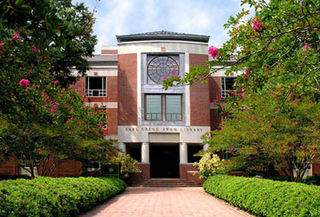 W
WThe Earl Gregg Swem Library is located on Landrum Drive at the College of William and Mary in Williamsburg, Virginia. The library is named for Earl Gregg Swem, College Librarian from 1920-1944. In 2008, the Princeton Review rated William & Mary's library system as the eighth best in the United States. The ranking was based on a survey of 120,000 students from 368 campuses nationwide.
 W
WThe Thomas Fisher Rare Book Library is a library in the University of Toronto, constituting the largest repository of publicly accessible rare books and manuscripts in Canada. The library is also home to the university archives which, in addition to institutional records, also contains the papers of many important Canadian literary figures including Margaret Atwood and Leonard Cohen.
 W
WThe UCSF Library is the library of the University of California, San Francisco. It is one of the world's foremost libraries in the health sciences.
 W
WThe William Andrews Clark Memorial Library, an affiliated library of the University of California, Los Angeles, holds rare books and manuscripts with particular strengths in English literature and history (1641–1800), Oscar Wilde and the fin de siècle, and fine press printing. It is located about ten miles southeast from UCLA, in the West Adams district of Los Angeles, and two miles west of the University of Southern California. It is administered by UCLA's Center for Seventeenth- and Eighteenth-Century Studies, which offers several long- and short-term fellowships for graduate and postdoctoral scholars to use the Library's collections. However, any reader with an interest in the collection is welcome to study.
 W
WThe William L. Clements Library is a rare book and manuscript repository located on the University of Michigan's central campus in Ann Arbor, Michigan. Specializing in Americana and particularly North American history prior to the twentieth century, the holdings of the Clements Library are grouped into four categories: Books, Manuscripts, Graphics and Maps. The library's collection of primary source materials is expansive and particularly rich in the areas of social history, the American Revolution, and the colonization of North America. The Book collection includes 80,000 rare books, pamphlets, broadsides, and periodicals. Within the other divisions, the library holds 600 atlases, approximately 30,000 maps, 99,400 prints and photographs, 134 culinary periodicals, 20,000 pieces of ephemera, 2,600 manuscript collections, 150 pieces of artwork, 100 pieces of realia, and 15,000 pieces of sheet music.
 W
WWright v. Warner Books (1991) was a case in which the widow of the author Richard Wright (1908–1960) claimed that his biographer, the poet and writer Margaret Walker (1915–1998), had infringed copyright by using content from some of Wright's unpublished letters and journals. The court took into account the recent ruling in Salinger v. Random House, Inc. (1987), which had found that a copyright owner had the right to control first publication, but found in favor of Walker after weighing all factors. The case had broad implications by allowing the use of library special collections for academic research.
 W
WThe Yale Center for British Art at Yale University in downtown New Haven, Connecticut, houses the largest and most comprehensive collection of British art outside the United Kingdom. The collection of paintings, sculpture, drawings, prints, rare books, and manuscripts reflects the development of British art and culture from the Elizabethan period onward.